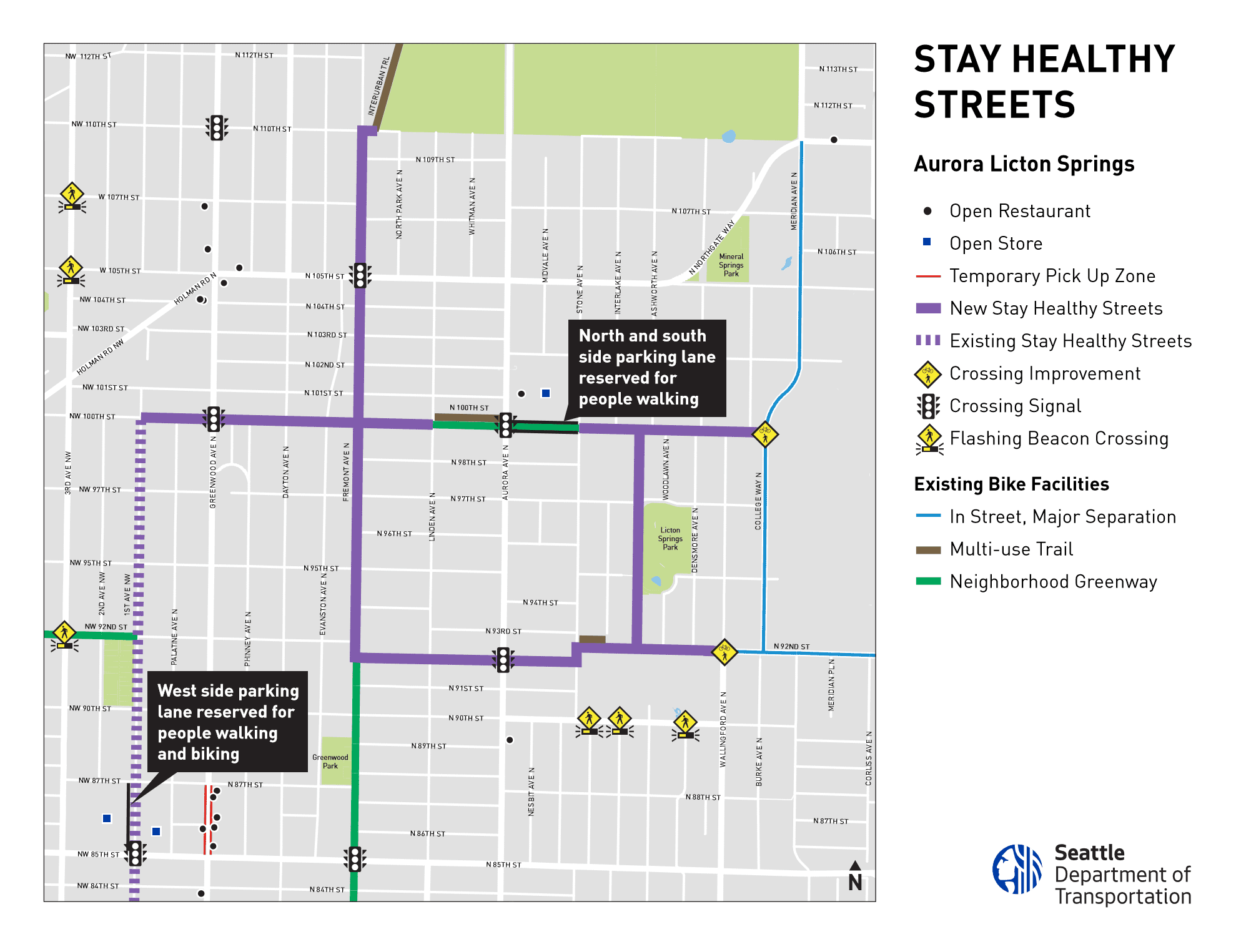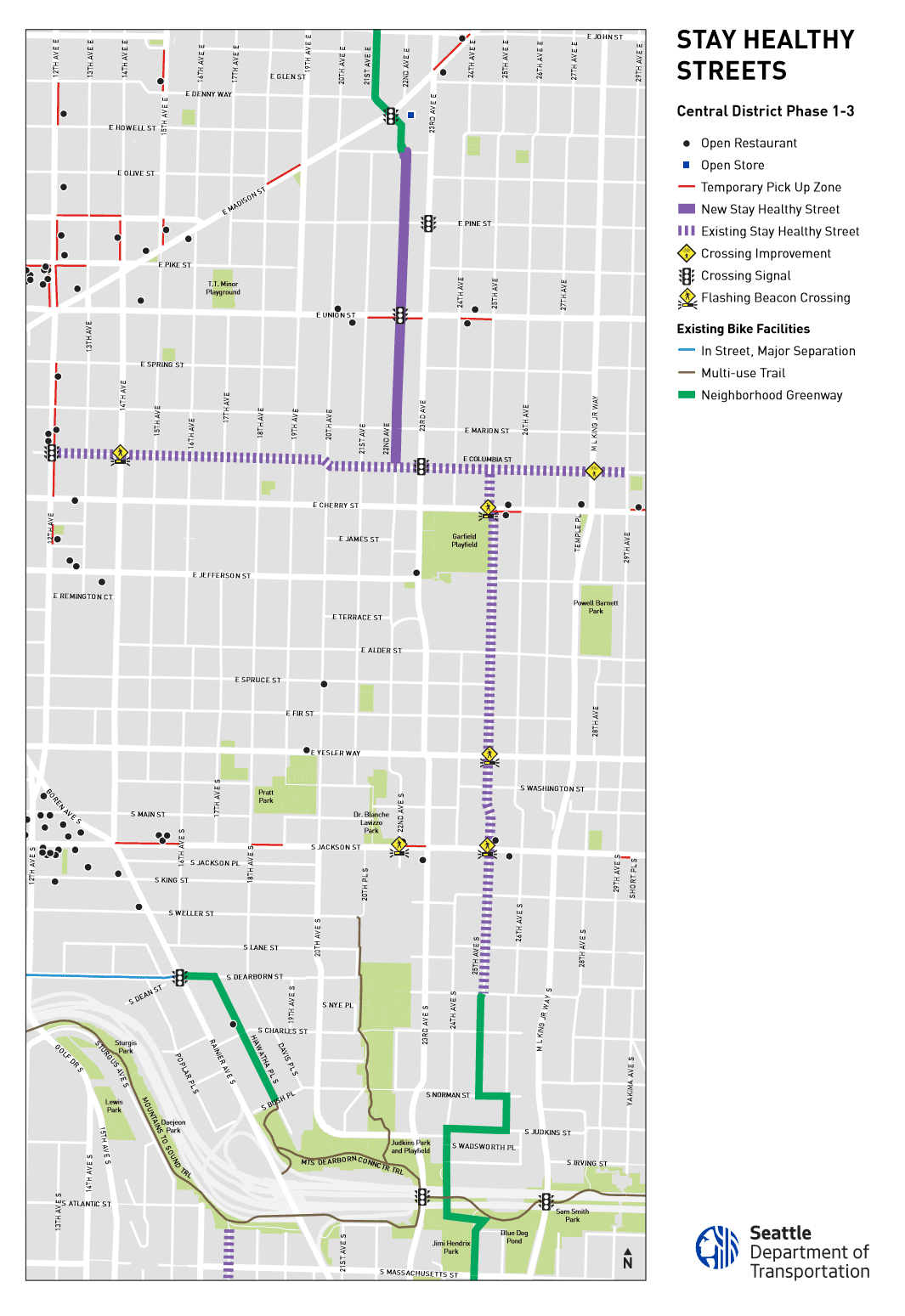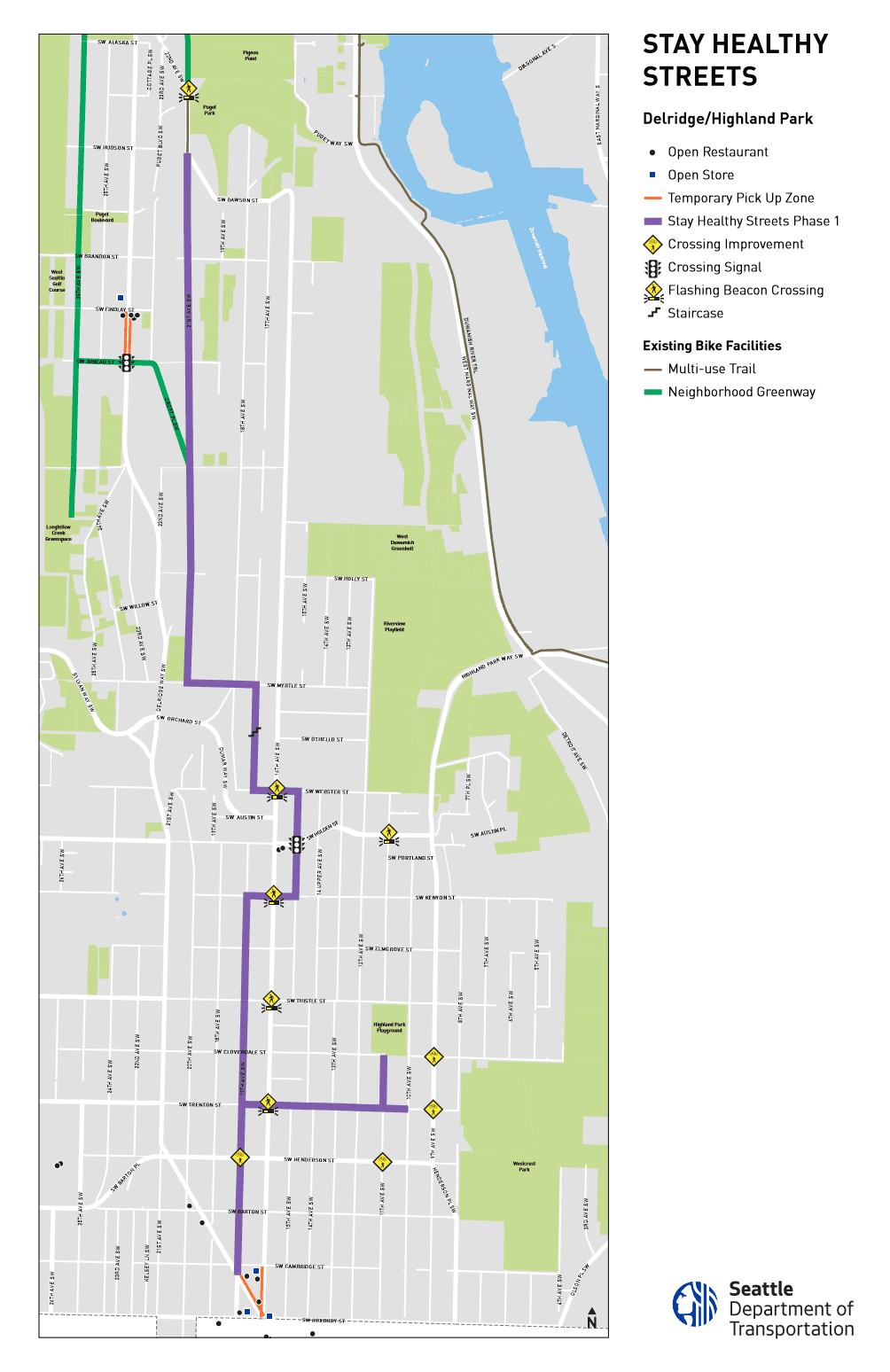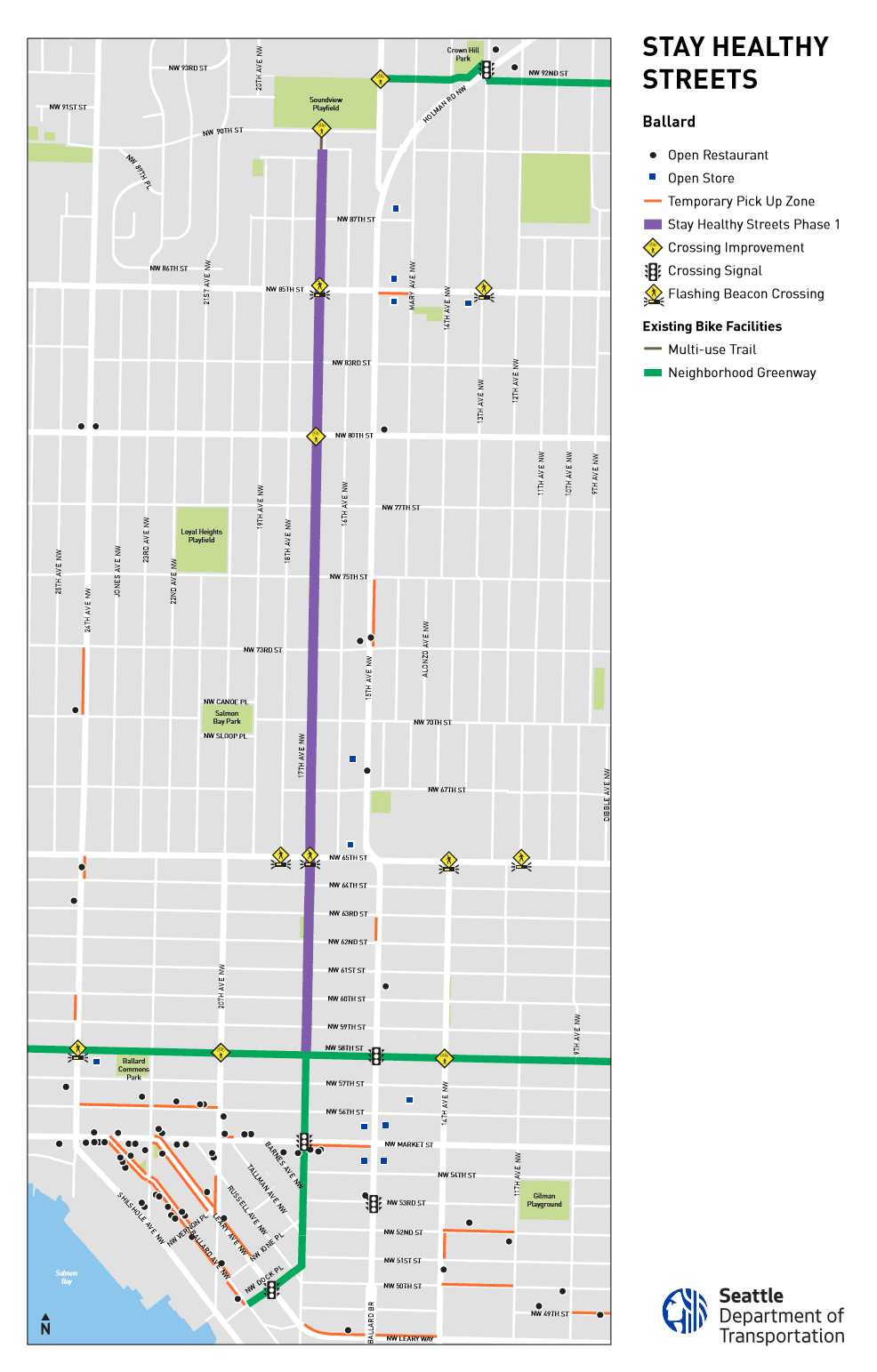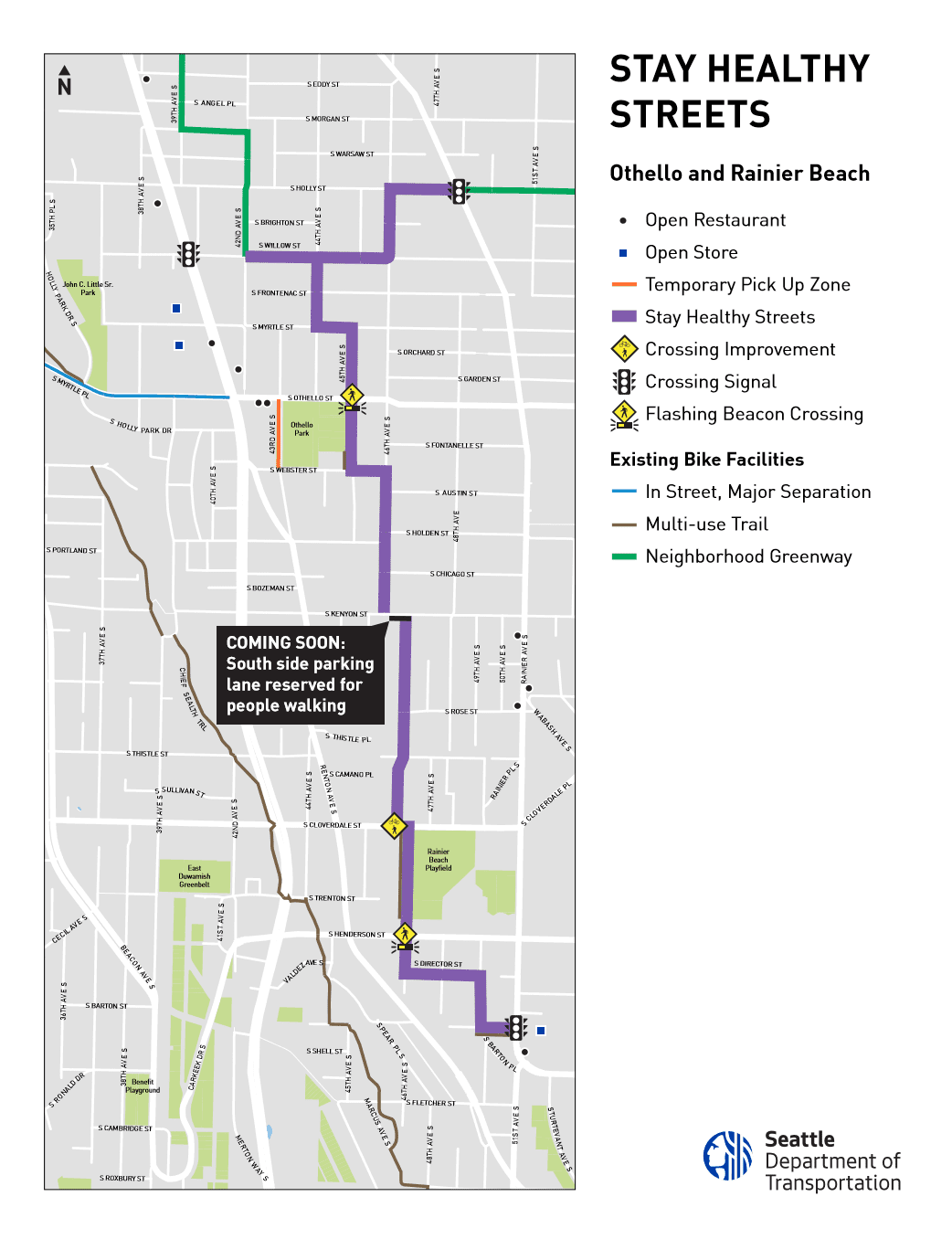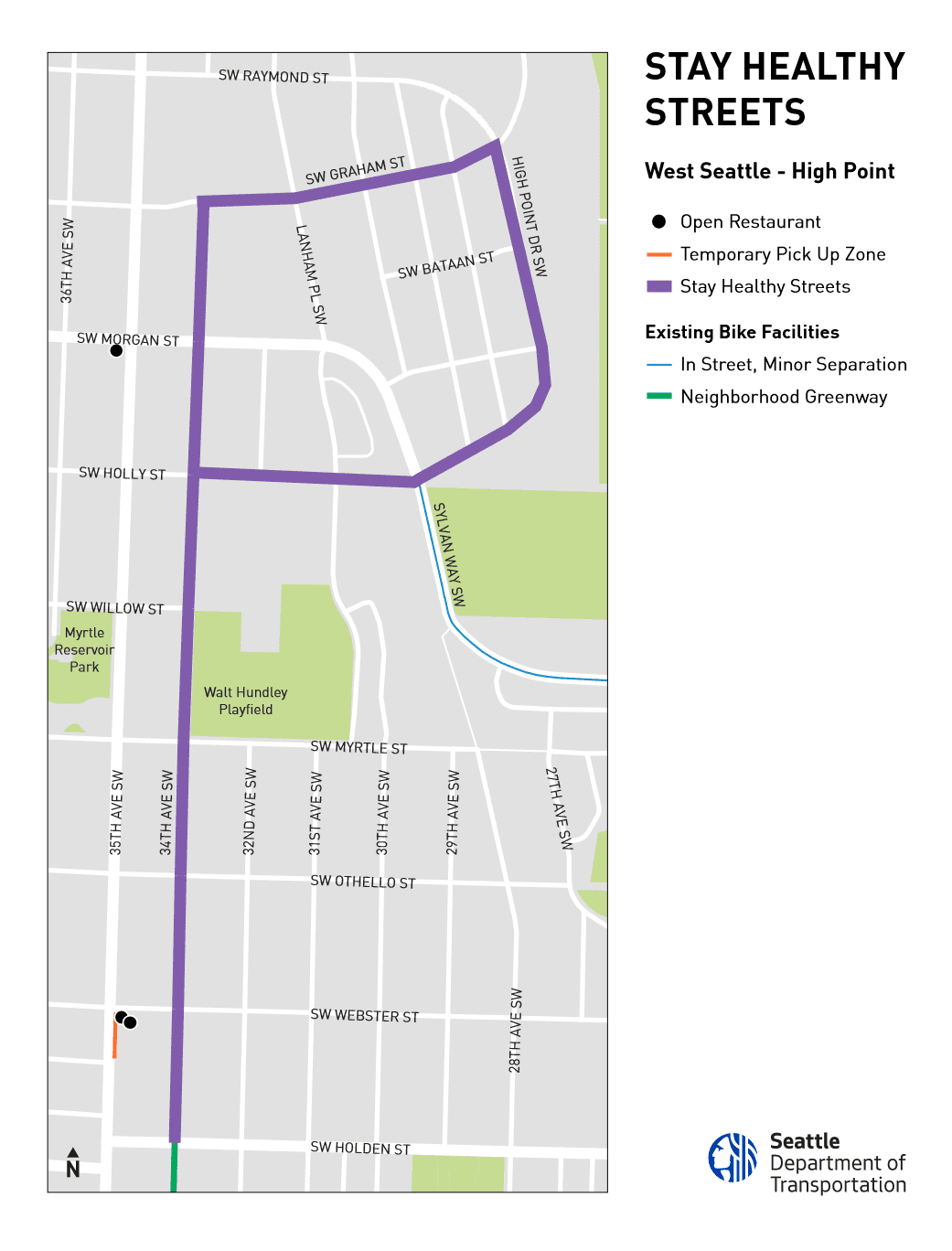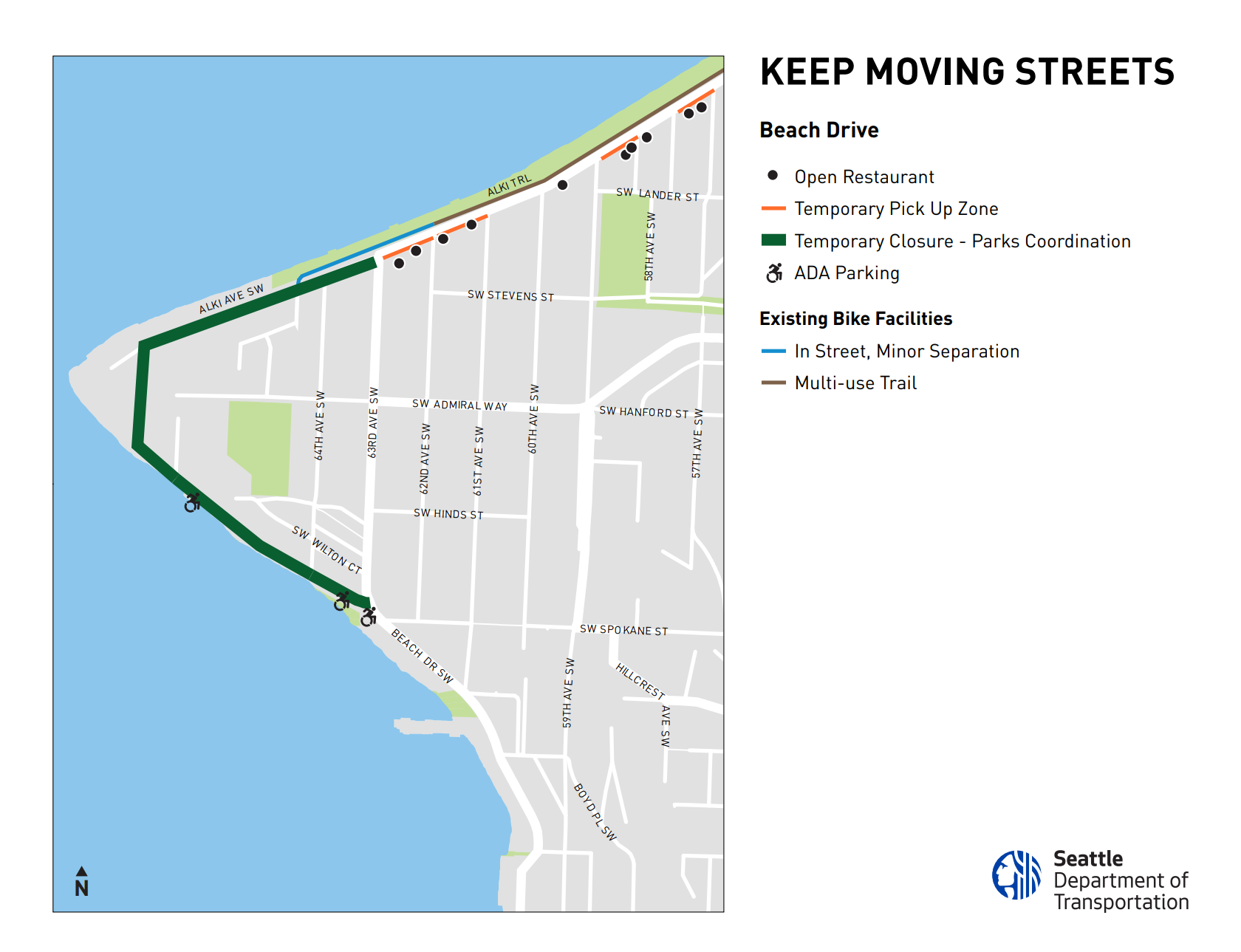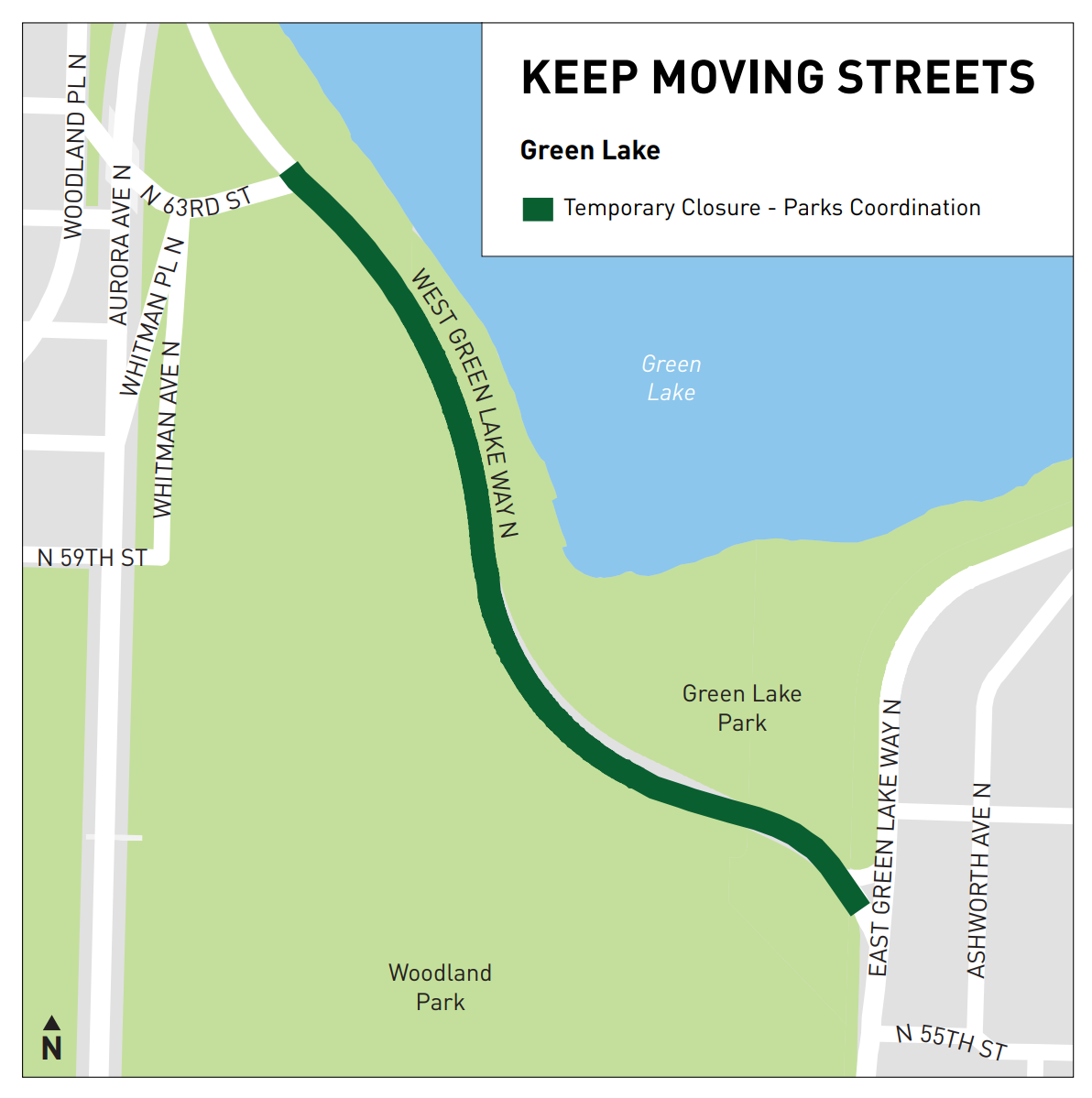
Mayor Durkan and SDOT are making at least 20 miles of the Stay Healthy Streets pilot permanent, and moving forward with a bold vision of enhanced bike infrastructure.
Mayor Jenny Durkan announced today that Seattle will make at least 20 miles of Stay Healthy Streets permanent.
She also directed SDOT to expand the program to include routes in more neighborhoods and accelerate the installation of new bike facilities such as Neighborhood Greenways and protected bike lanes, helping to give West Seattle residents more travel options during the West Seattle High-Rise Bridge closure.
The first expansion of Stay Healthy Streets starts tomorrow by adding 3 more miles in Rainier Valley from Mount Baker to Columbia City and Othello.
“We are in a marathon and not a sprint in our fight against COVID-19,” said Seattle Mayor Jenny Durkan. “As we assess how to make the changes that have kept us safe and healthy sustainable for the long term, we must ensure Seattle is rebuilding better than before. Stay Healthy Streets are an important tool for families in our neighborhoods to get outside, get some exercise and enjoy the nice weather. Over the long term, these streets will become treasured assets in our neighborhoods,”
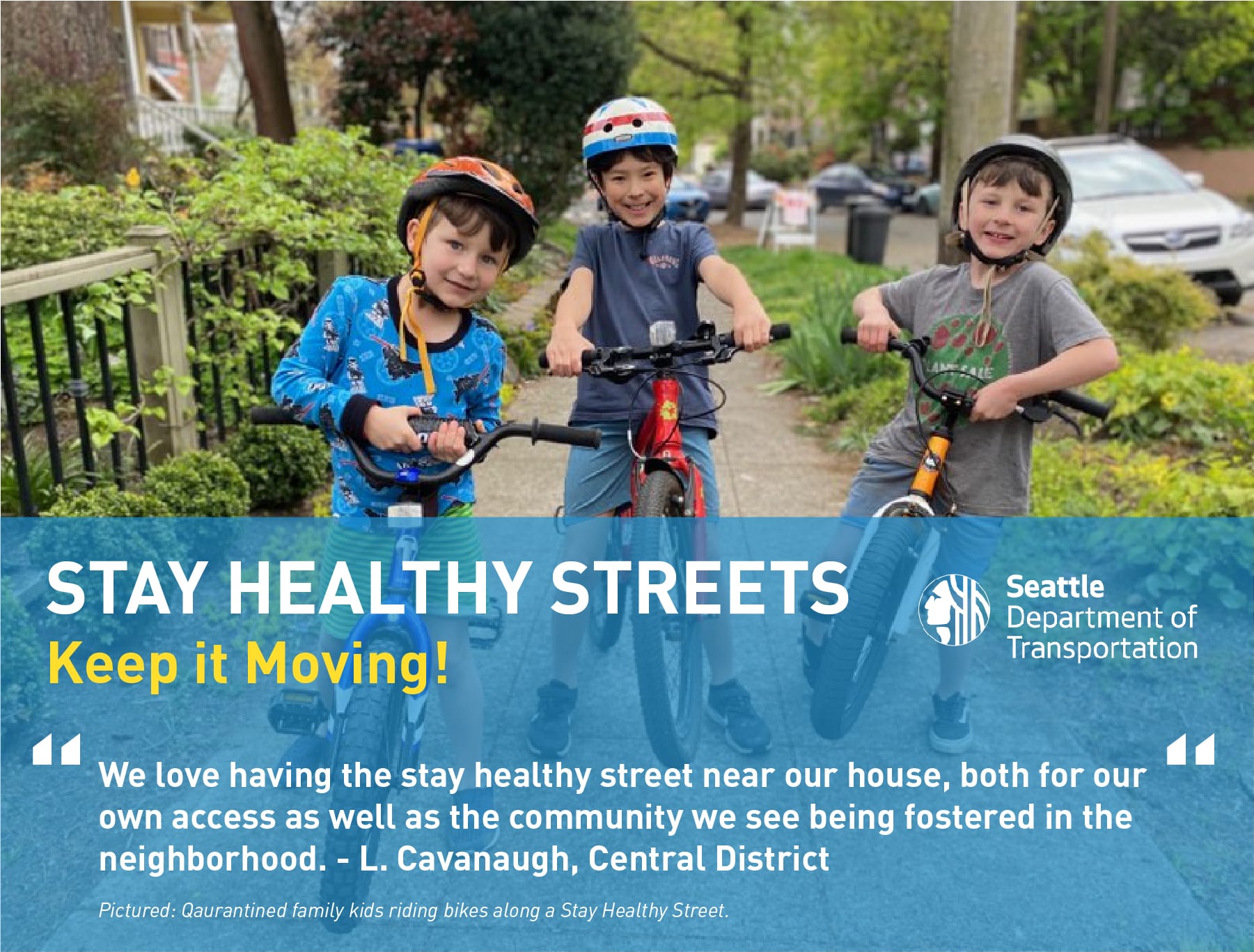
It is critical that Seattle creates the bike infrastructure that will allow residents to stay healthy and also get to and from essential locations.
Cities across the U.S. and the world are starting to think about how people will get around as a phased reopening of the economy begins. Transit must change to ensure effective physical distancing, which could potentially reduce transit capacity for a year or more.
Seattle is committed to enabling more people to make essential trips, commute, and recreate safely. People must have sustainable options to get around without a car.
In 2019 bike ridership increased 18% compared to the previous year (data based on permanent bike counters).
As we prepare for our new normal, Seattle will need to invest even more in walking and biking infrastructure in 2020. As we rebuild our City, we have the opportunity to build lasting, positive change toward a more livable, safer city of the future for all.
We’ve witnessed a 57% drop in vehicle traffic volumes accessing downtown Seattle during Governor Inslee’s Stay Healthy, Stay Home order. Finding new and creative ways, like Stay Healthy Streets, to maintain some of these traffic reductions as we return to our new normal is good for the planet, but is also good for our long-term fight against COVID-19.
As physical distancing becomes the new normal, we need to think longer term.
Stay Healthy Streets provide an excellent option for getting to essential services like grocery stores and small businesses open for pickup. As the weather gets warmer, there will also be increased demand for our outdoor public spaces. These Stay Healthy Streets add to our extensive park system and provide more room for people to be outdoors safely.
Our Stay Healthy Streets also compliment new efforts just announced to adapt to the city’s changing needs by adjusting nearly 800 traffic signals throughout Seattle to reduce the time people need to wait to cross the street. We also shared that we are working to making 75% of downtown and urban village traffic signals automatically show a walk sign every time so people don’t need to press a crosswalk button.
“Just like we must each adapt to a new normal going forward, so, too, must our city and the ways in which we get around. That is why we’re announcing a nimble, creative approach towards rapidly investing in a network of places for people walking and people biking of all ages and abilities and thinking differently about our traffic signals that make pedestrians a greater priority. Despite the many challenges we face, 2020 will remain a year of thoughtful, forward progress as we build a safer, more livable Seattle for all ” said Sam Zimbabwe, Seattle Department of Transportation Director.
In keeping with our livability and sustainability values, Stay Healthy Streets launched April 17.
Starting with 2.5 miles, we closed streets to thru-traffic and opened them up for people to walk, run, roll, and bike safely in the street while maintaining proper physical distancing guidelines.
We initially set out to pilot 15 miles of Stay Healthy Streets on existing Neighborhood Greenways. Neighborhood Greenways are a natural home to these efforts because they already include safety enhancements, like speed humps approximately every block, stop signs at residential streets, and crossing improvements at arterials.
Stay Healthy Streets were selected to amplify outdoor exercise opportunities for areas with limited open space options, low car ownership and routes connecting people to essential services and food take out.
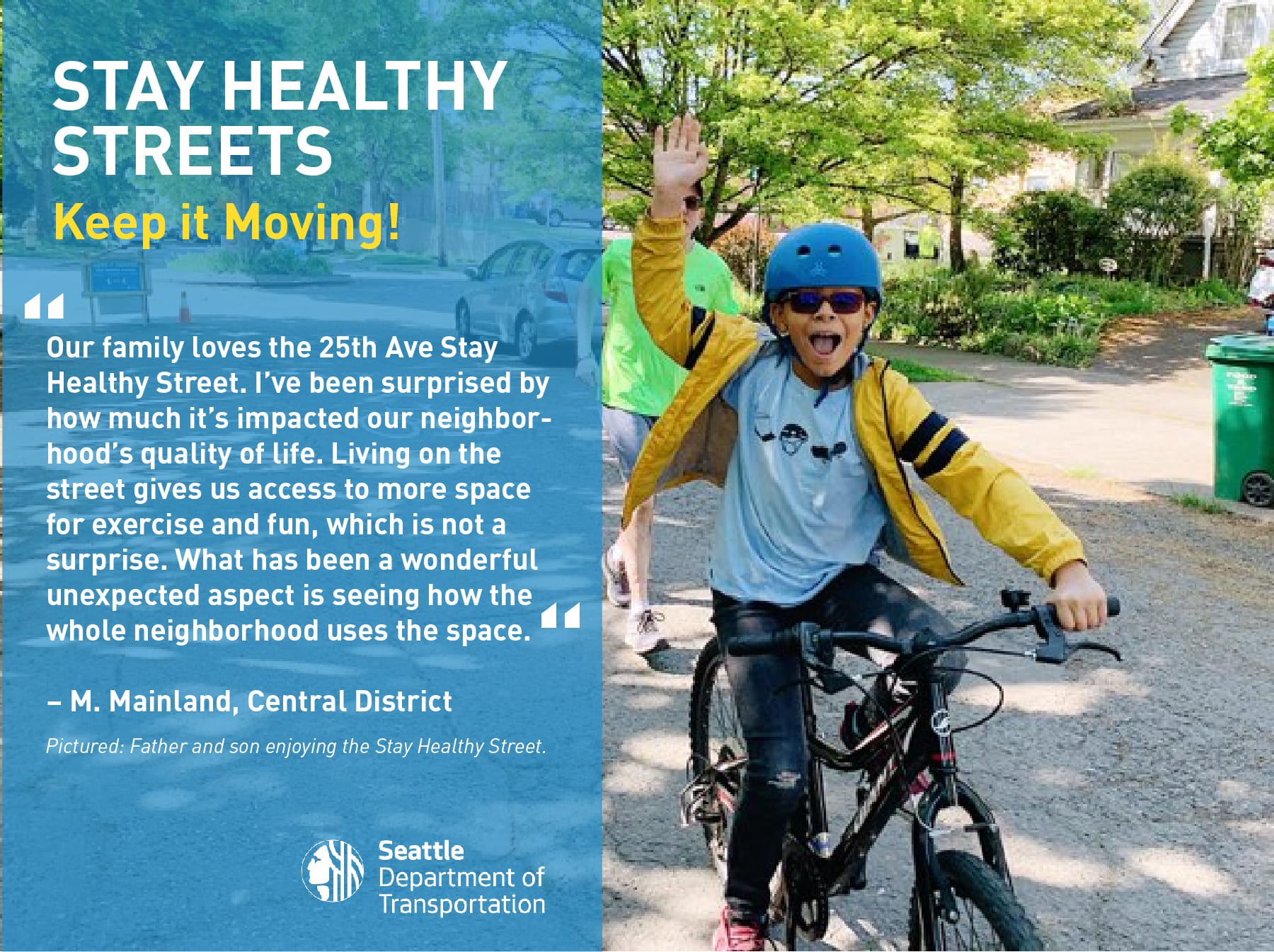
By adding Street Closed signs people can stay close to home and have additional space for physical distancing 24 hours a day, seven days a week. Residents can drive to their homes and delivery services can still occur.
Street closures do not impact newly opened Food Pickup loading zones, parking around hospitals for residents and health care professionals, and bus routes. We’ve also been working with garbage and recycling collectors to ensure pickup is not affected.
Community support for our first round of Stay Healthy Streets was broad and immediate.
One observed count on our Central Area greenway, for example, showed biking was up almost 300% compared to 2017 data.
This powerful, positive response helped us decide to quickly surpass this goal and by Friday this week, we will have implemented 23 miles of Stay Healthy Streets with new routes in Rainier Valley.
Observations indicate people of all ages using the Safe and Healthy Streets, and travelers following #KeepItMoving guidelines. Drivers have been respectful and few, and about 10 to 40 people per mile are walking and biking along the sidewalks and streets depending on the location.
Streets tend to be busier in afternoons and weekends and neighbors are resetting Street Closed signs and pylons as they get moved or knocked down. We will continue educating drivers on the importance of sharing the road and paying attention. To make sure the signs remain in place and the streets function correctly, SDOT crews inspect each route daily.
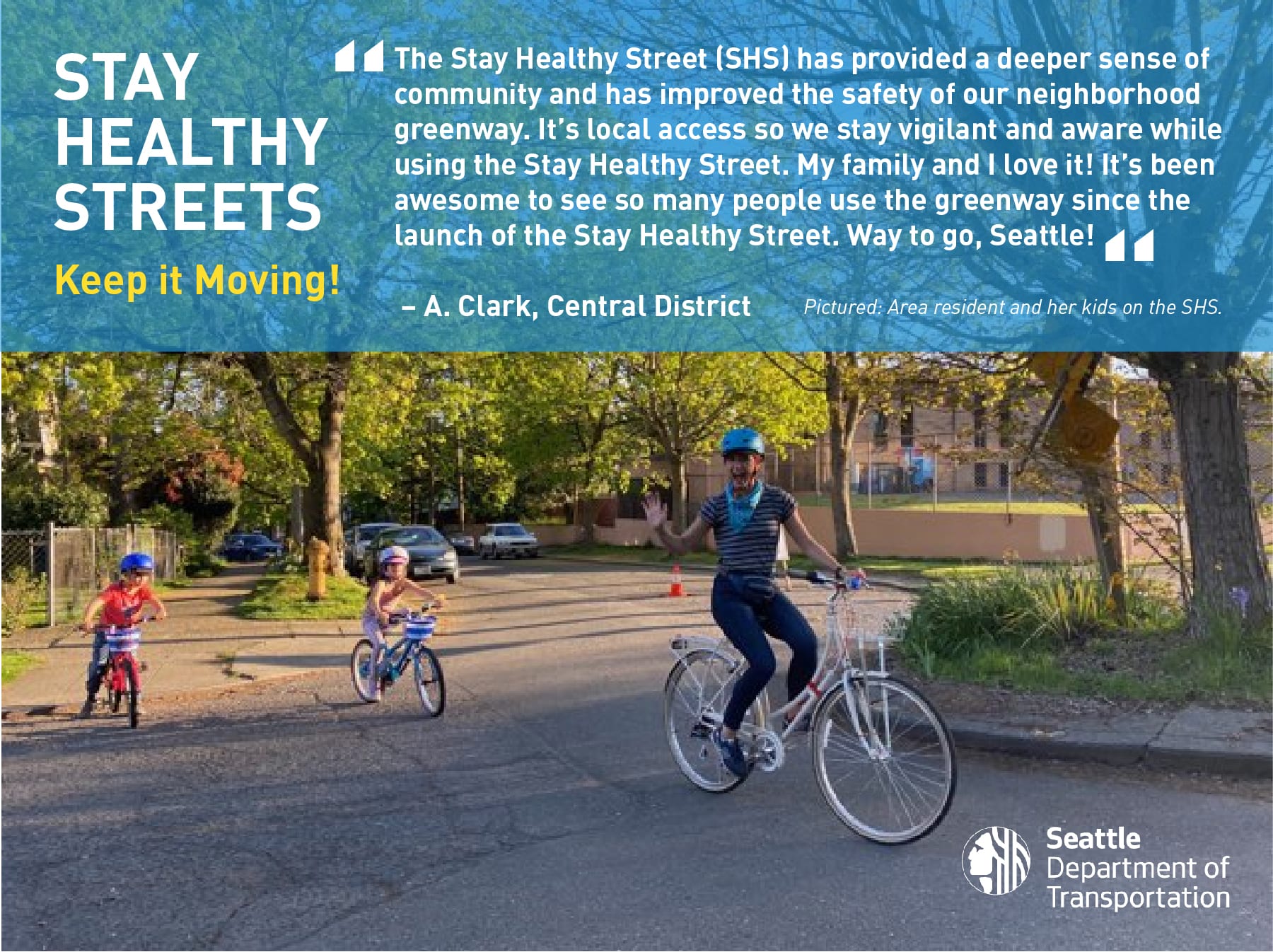
We’re working closely with the community, businesses and the Seattle Bicycle and Pedestrian Advisory Boards.
One way we’ll do this is to launch a survey next week asking for your observations of Stay Healthy Streets, ideas for improving, and approaches to future expansion. In the meantime, feel free to send ideas and comments to NorthSeattleGreenway@Seattle.gov. We’ve enjoyed hearing from you over the past couple of weeks. Thank you for your patience as we read and respond to them all.
“We support the Mayor’s proposal expanding and making permanent the Stay Healthy Streets network. It is the kind of bold actions we need to encourage healthy options for recreating and traveling in our city as we deal with our current crisis, and discourage a return to high levels of traffic and associated pollution and injuries as we move into recovery. Accelerating bicycle projects as requested by a coalition of South Park, Georgetown, and West Seattle neighborhood organizations and endorsed by the Seattle Bicycle Advisory Board is needed to ensure that residents can safely travel within their neighborhood and to the rest of the city, and to mitigate the impacts of additional car traffic in their communities. All these action together will help the Seattle come back as a safer, healthier, and more climate friendly city.” —Seattle Bicycle Advisory Board
In addition to Stay Healthy Streets, Seattle continues expanding our bike network and building critical connections while maintaining safe and healthy workspace guidelines.
In West Seattle, we are wrapping up a major complete street project on SW Avalon Way and 35th Ave SW. The new bike lanes on these streets were a critical piece of the growing West Seattle network because they get us closer to a direct connection between the West Seattle Bridge Trail and Alki Trail to the Junction neighborhood and business district.
Next month we break ground on the Delridge Way SW – RapidRide H Line project with King County Metro, starting the transformation of a major arterial into a safer street with new bike facilities, bus lanes for soon-to-come RapidRide service, street trees, and pedestrian crossings.
To move people biking northbound and between the West Seattle Bridge Trail and SW Juneau St, we’re improving the neighborhood greenway network. This includes new speed humps, traffic diverters to calm traffic and prevent cut-throughs, and a new route to avoid a staircase.
Outside of West Seattle, we’re continuing the Green Lake and Wallingford Paving and Multimodal Project, creating 2.55 miles of protected bike lanes and creating more space to recreate around the lake. We’re also constructing the Northgate Bicycle and Pedestrian Bridge connecting Greenwood, Phinney Ridge and Crown Hill to the future Northgate Link Light Rail Station via the new North Seattle Neighborhood Greenway.
In light of the COVID-19 health crisis and closure of the West Seattle High-Rise Bridge, Mayor Durkan also directed the SDOT to evaluate and accelerate implementation of other bicycle facilities.
We’re taking a serious look at advancing key projects or filling gaps in the bike network to make it easier for people to ride bikes. We expect to have more specifics about project details in the next few weeks and look forward to sharing more information.
